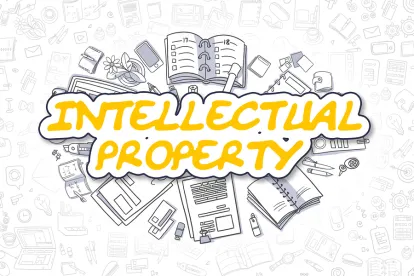On April 19, 2018, the U.S. Patent and Trademark Office released a Memorandum to the Patent Examining Corps regarding changes in examination procedure pertaining to subject matter eligibility in view of the Federal Circuit’s Berkheimer v. HP Inc. decision. Berkheimer held that when a claim is directed to an abstract idea, the question of whether a claim element or combination of elements is “well-understood, routine and conventional to a skilled artisan in the relevant field”—which bears on whether a claimed abstract idea can be transformed into a patent-eligible application—is a question of fact.
The Memorandum tightens the permissive language of MPEP § 2106.05 (d)(I.) (“examiners should keep in mind the following points when determining whether additional elements define only well-understood, routine, conventional activity.”) by clarifying that examiners now must base a conclusion that an element represents well-understood, routine, conventional activity upon a factual determination as set forth in Section III of the Memorandum. The affirmative placement of the burden on examiners to support a claim rejection under 35 U.S.C. § 101 by utilizing one or more of four possible options set forth in Section III appears similar to the approach under MPEP § 2142 that assigns to examiners the initial burden of establishing a prima facie conclusion of obviousness (“The examiner bears the initial burden of factually supporting any prima facie conclusion of obviousness.”). See also MPEP § 2141 II.
Berkheimer Memorandum Changes in Examination Procedure
When rejecting claims under § 101, examiners must now apply the same analysis used in the context of rejecting claims under § 112(a). That is, examiners must now make a factual determination that an element represents well-understood, routine, conventional activity in the same manner utilized under § 112(a) to determine whether an element is so well-known that it need not be described in detail in the patent specification.
For the avoidance of doubt, the Memorandum also states that whether an additional element represents well-understood, routine, conventional activity is distinct from patentability over the prior art under §§ 102 and 103. Citing Berkheimer, the Memorandum states that “[t]he mere fact that something is disclosed in a piece of prior art, for example, does not mean it was well-understood, routine, and conventional.”
Steps 2A and 2B shown in the flowchart of MPEP § 2106 III. are known as the Alice/Mayo test. With respect to the “significantly more” component of step 2B, an additional element (or combination of elements) is not well-understood, routine, or conventional unless the examiner finds, and expressly supports a rejection in writing with one or more of the following options set forth in Section III of the Memorandum:
-
An express statement in an applicant’s specification or citation to a statement made by an applicant during prosecution that demonstrates the well-understood, routine, conventional nature of the additional element(s).
-
A citation to one or more of the court decisions discussed in MPEP § 2106.05(d)(II.) as noting the well-understood, routine, conventional nature of the additional element(s).
-
A citation to a publication that demonstrates the well-understood, routine, conventional nature of the additional element(s).
-
A statement that the examiner is taking official notice of the well-understood, routine, conventional nature of the additional element(s).
Berkheimer Memorandum Applicability and Considerations
While the Memorandum can be a useful resource to consider and utilize during application drafting and prosecution, practitioners should also be aware of certain ramifications the Memorandum may have in conjunction with appeal to the Patent Trial and Appeal Board (PTAB) and Federal Circuit.
Option 1 (above) allows examiners to use express statements that are in the specification or made during prosecution to demonstrate the well-understood, routine, conventional nature of an additional elements.
In the appeal of application serial no. 14/272,942, the PTAB noted that “the Specification recognizes that use of a generic server computer, a network, and a client computing device is conventional,” and concluded that the Examiner did not err in the rejecting claims under §101. In contrast, the PTAB’s decision for application serial no. 13/491,884 stated that the “Examiner failed to establish an evidentiary basis to support a conclusion that elements of Appellants’ claimed invention were well-understood, routine, and conventional in this field prior to Appellants’ claimed invention.”
Examiners cannot allege that an element is well-understood, routine, or conventional based only on the fact that the specification is silent with respect to describing such element. It would be prudent for applicants to consider carefully scrutinizing the specification and other papers prior to filing for possible admissions or suggestions that a current or potential claim element is a well-understood, routine, or conventional activity.
Practitioners should also bear in mind that the Memorandum is addressed and directed to the Patent Examining Corps, and that the MPEP makes clear the distinction between the patent examining corps and the PTAB. For example, while MPEP §§ 1701, 1702 and 1721 refer to the patent examining corps, §§ 1705, 1720 and 1721 refer to the PTAB.
In addition, the Foreword to the MPEP states that the Manual contains instructions to examiners, and that the MPEP does not have the force of law. The Foreword also states that “[e]xaminers will be governed by the applicable statutes, rules, decisions, and orders and instructions issued by the Director of the USPTO and other officials authorized by the Director of the USPTO.”
Of the approximately sixty PTAB appeal decisions issued from an examiner’s final rejection during ex parte examination that have issued since and cite to the Berkheimer decision, I have identified only two decisions that also cite to the Memorandum. Accordingly, applicants should consider monitoring PTAB decisions and give appropriate strategic consideration under particular circumstances to the relative balance and extent to which the Memorandum and Federal Circuit case law are cited in response to § 101 claim rejections made by examiners during prosecution and on appeal.
Key Takeaways
Practitioners should consider assessing whether an examiner has fully complied with the Memorandum, and endeavor to persuade examiners to comply with the Memorandum when a rejection has been issued under § 101. Further dialogue with the examiner’s supervisor or technical center director, and the filing of a petition may also be considered if agreement is not reached.
Practitioners should also consider PTAB decisions indicating that an Examiner’s failure to follow the Director’s guidance is appealable only to the extent that the Examiner has failed to follow the statutes or case law, and that an Examiner’s failure to comply with guidance issued by the director is a matter for petition—not appeal to the PTAB.
Finally, Practitioners should monitor future Federal Circuit decisions that may provide additional clarification as to whether a claim element or combination of elements is well-understood, routine, and conventional to a skilled artisan in the relevant field, along with other decisions that pertain to patent eligibility under § 101, and factor such developments into potential strategies for continued prosecution and appeal.




 />i
/>i

